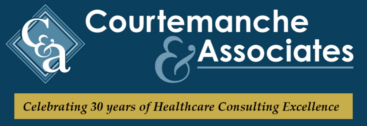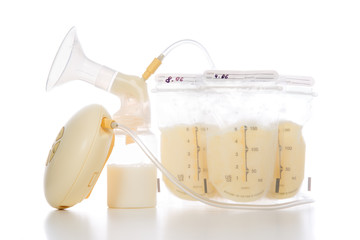Introduction
Breastfeeding, also called nursing, is the process of feeding human breast milk to a child, either directly from the breast or by expressing the milk from the breast and bottle-feeding it to the infant. The World Health Organization recommends that breastfeeding begin within the first hour of a baby’s life and continue as often and as much as the baby wants. During the first few weeks of life babies may nurse roughly every two to three hours, and the duration of a feeding is usually ten to fifteen minutes on each breast. Older children feed less often. Mothers may pump milk to store for usage later when breastfeeding is not possible. Breastfeeding has a number of benefits to both mother and baby, which infant formula lacks.
The American Academy of Pediatrics (AAP) recommends that infants be exclusively breastfed for about the first 6 months with continued breastfeeding while introducing appropriate complementary foods for 1 year or longer. The World Health Organization also recommends exclusively breastfeeding up to 6 months with continued breastfeeding along with appropriate complementary foods up to 2 years of age or older.
Breastfeeding is one of the most effective ways to ensure child health and survival. However, nearly 2 out of 3 infants are not exclusively breastfed for the recommended 6 months—a rate that has not improved in 2 decades. Breastmilk is the ideal food for infants. It is safe, clean and contains antibodies which help protect against many common childhood illnesses. Breastmilk provides all the energy and nutrients that the infant needs for the first months of life, and it continues to provide up to half or more of a child’s nutritional needs during the second half of the first year, and up to one third during the second year of life. Breastfed children perform better on intelligence tests, are less likely to be overweight or obese and less prone to diabetes later in life. Women who breastfeed also have a reduced risk of breast and ovarian cancers.
So how do we keep breast milk safe in the hospital?
Here are some tips related to storing, thawing, feeding, and cleaning processes when managing breast milk:
Accessing and Storage of Breast Milk
- Prior to expressing or pumping milk, the mother should perform hand hygiene using soap and water.
- Make sure that the pump kit and tubing is clean and free of any residual milk. Cleaning the pump after each use is important and the manufacturer’s instructions must be followed for how to do so.
- Once the milk is expressed storage is of the utmost importance. Breast milk should be stored in a clean storage bag that can be tightly sealed. Label the bag with the date the milk was expressed along with the mothers and babies ID label. If using a permanent marker to label the bag, concerns exist over the leeching of the marker into the milk. To avoid this, only use the marker on parts of the bag that do not come in contact with the milk.
- Remember that any label must contain 2 patient identifiers.
- Store the milk in the refrigerator or freezer. As temperature of the freezer or refrigerator vary the greatest on the door, do not store breast milk in the door.
- Freeze milk in small amounts (2-4 ounces) to avoiding wasting of the milk. Leave an inch at the top of the bag, as breast milk will expand when frozen.
Human Milk Storage Guidelines per the Centers for Disease Control and Prevention
| Storage Location and Temperatures | Storage Location and Temperatures | Storage Location and Temperatures | |
| Type of Breast Milk | Countertop 77°F (25°C) or colder room | Refrigerator 40°F (4°C) | Freezer 0°F (-18°C) or colder |
| Freshly Expressed or Pumped | Up to 4 Hours | Up to 4 Days | Within 6 months is best but can go up to 12 months |
| Thawed, Previously Frozen | 1–2 Hours | Up to 24 hours | NEVER refreeze human milk after it has been thawed |
| Leftover from a Feeding (baby did not finish feeding) | Use within 2 hours after the baby finishes feeding | Use within 2 hours after the baby finishes feeding | Use within 2 hours after the baby finishes feeding |
Thawing of Breast Milk
- When thawing breast milk always make sure that the ID label on the bag matches the mothers and babies ID bracelets.
- Thaw milk under lukewarm running water, in a container of lukewarm water or overnight in the refrigerator. DO NOT MICROWAVE BREAST MILK.
- Thawed milk should be used within 24 hours in the refrigerator (from the time it is completely thawed, not from the time when you took it out of the freezer).
- Use thawed milk within 2 hours of bringing to room temperature or warming.
- NEVER REFREEZE THAWED MILK.
Feed Time
- Breast milk can be served cold, room temperature or warm.
- To heat the milk, place the bag into a container of warm water or hold under warm running water.
- Check the temperature by putting a few drops on your wrist. Make sure it is not too hot.
- Swirl the milk to mix the fat, which may have separated.
- Use within 2 hours and discard any remaining milk.
Cleaning After Feeding
- Wash and disassemble the pump and all its parts and clean in accordance with the manufacturer’s instructions.
- Store in a clean, protected area.
In summary, breast milk when stored and thawed properly, is safe for babies and young children.
Proper cleaning of equipment after use is important to prevent contamination of the milk and prevents illness in the baby/child. Make sure that all bags of breast milk are properly labeled per your organizations policy prior to storage.
References
- American Academy of Pediatrics. Section on Breastfeeding. Breastfeeding and the Use of Human Milkexternal icon. Pediatrics. 2012;129(3): e827-841. DOI 2011-3552. Accessed August 24, 2021.
- World Health Organization. WHO Breastfeeding websiteexternal icon. Accessed August 24, 2021.
- Centers for Disease Control and Prevention website (cdc.gov).


